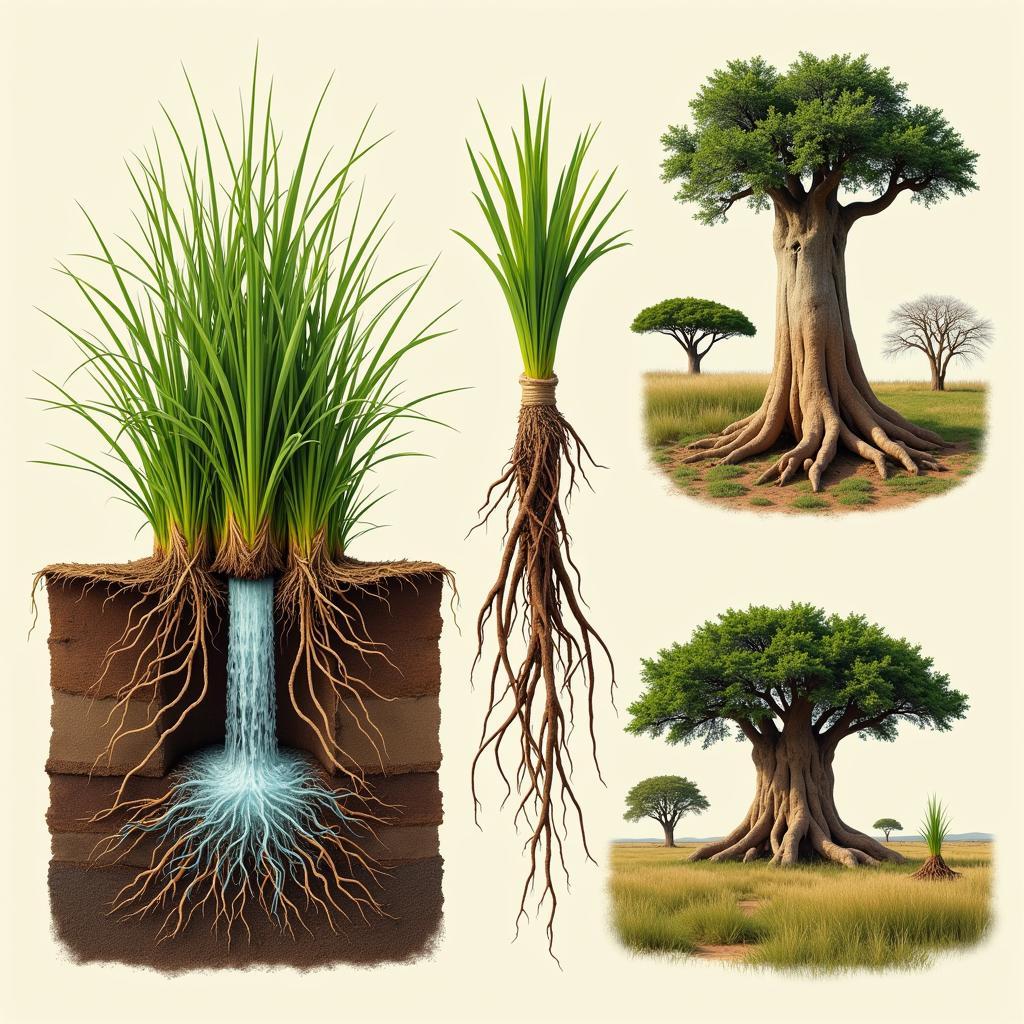Unveiling the Wonders: African Grassland Facts
African Grassland Facts reveal a world teeming with life, a dynamic ecosystem shaped by diverse flora and fauna. These vast expanses, also known as savannas, are far more than just open fields; they are a complex tapestry of interacting elements, from the smallest insects to the largest mammals.
The African grasslands, covering nearly half of the continent, are a testament to the power of adaptation and survival. From the iconic acacia trees to the elusive cheetah, every element plays a vital role in maintaining the delicate balance of this unique biome. Let’s delve deeper into the fascinating world of the African grasslands and uncover the secrets they hold. After the opening, you might be interested in learning about the african five animals and their adaptation to survive.
The Climate and Landscape: Shaping the African Savanna
The African grassland climate is characterized by distinct wet and dry seasons. These fluctuating conditions influence the types of plants and animals that can thrive in this environment. Rainfall varies considerably across different regions, with some areas experiencing heavy downpours while others endure prolonged periods of drought. This variability creates a mosaic of habitats within the grasslands, each supporting unique communities of organisms. Temperatures are generally warm year-round, with the hottest months coinciding with the dry season.
What is the Average Rainfall in African Grasslands?
The average rainfall in African grasslands varies between 30 and 100 centimeters annually.
The Flora of the Savanna: Adapting to Harsh Conditions
The plants of the African grasslands have evolved ingenious strategies to cope with the challenging environment. Many grasses have deep root systems that allow them to access water during dry periods. Some trees, like the baobab, store water in their thick trunks, while others have adapted to withstand fire, a common occurrence during the dry season. The diversity of plant life supports a vast array of herbivores, which in turn sustain the predators at the top of the food chain.
 Flora Adaptations in African Grasslands
Flora Adaptations in African Grasslands
What types of trees are found in the African grasslands?
Common tree species include acacia, baobab, and various fire-resistant trees. You might want to learn some intriguing african jungle facts.
The Fauna: A Symphony of Life
The African grasslands are home to an incredible diversity of animal life, from the majestic elephant to the tiny dung beetle. Each species plays a crucial role in the ecosystem. Grazing animals like zebras and wildebeest maintain the grasslands by preventing the encroachment of trees and shrubs. Predators like lions and cheetahs regulate herbivore populations, ensuring the health of the ecosystem.
Which animals are commonly found in African grasslands?
Common animals include lions, elephants, zebras, giraffes, wildebeest, and various bird species. It’s fascinating to watch an african cheetah chasing its prey.
Threats and Conservation Efforts: Protecting this Vital Ecosystem
The African grasslands face numerous threats, including habitat loss due to agriculture and expanding human settlements, poaching, and climate change. Conservation efforts are crucial to protect this vital ecosystem and the diverse array of species that depend on it. These efforts include establishing protected areas, promoting sustainable land management practices, and combating poaching.
How can we help protect the African grasslands?
Supporting conservation organizations, promoting sustainable tourism, and raising awareness about the importance of these ecosystems are all ways to help. Learning interesting african ground squirrel facts can also contribute to a broader understanding of the savanna ecosystem.
Conclusion: The Future of the African Grasslands
The African grasslands are a treasure trove of biodiversity, a vital part of our planet’s natural heritage. Understanding african grassland facts is crucial for appreciating the complex interplay of life within these ecosystems. By working together, we can ensure that these magnificent landscapes continue to thrive for generations to come. You might find it interesting to read more about the african elephant big teeth.
FAQ
- What is the difference between a savanna and a grassland?
- What is the largest animal found in the African grasslands?
- What is the role of fire in the savanna ecosystem?
- What are the main threats to the African grasslands?
- How does the dry season impact the animals of the savanna?
- What types of grasses are found in the African grasslands?
- How do the animals of the savanna adapt to the lack of water during the dry season?
Need assistance? Contact us: Phone: +255768904061, Email: kaka.mag@gmail.com or visit our office at Mbarali DC Mawindi, Kangaga, Tanzania. We have a 24/7 customer service team ready to assist you.


